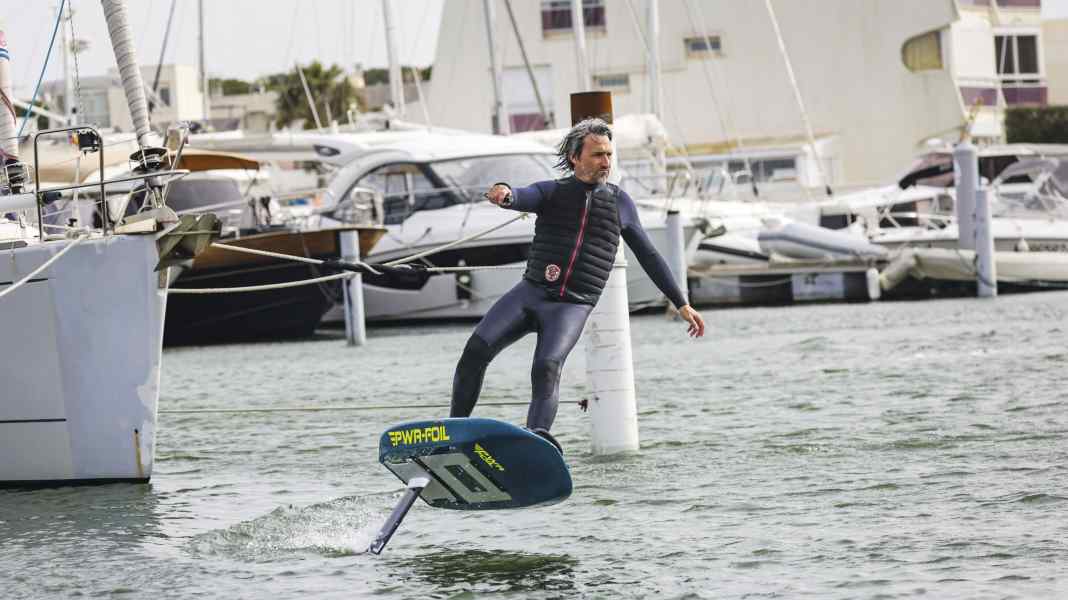Foiling with electric propulsion: E-foil tips from Powerfoil founder Chris Defrance
Stephan Gölnitz
· 31.05.2024

eFoils can be seen on more and more waters. Some see these boards as nothing more than a Segway on the water, but the fascination of being able to glide almost silently over glass-smooth water usually outweighs this. The boards are equipped with a foil and an electric motor, and the speed can be regulated using a remote control. But who are eFoils actually suitable for? And how difficult is it to learn? Chris Defrance from French manufacturer Powerfoil provides the answers.
Chris, what's the best way to learn eFoiling?
You can learn on your own, but you will certainly save a few hours with a course. For example, we offer courses in the Bay of Lübeck, near Neustadt. Oli Volz from our German sales organisation is based there.
Do you need previous experience in foil sports, or can you do it completely without?
I would even say that eFoils are a way of learning other foil sports such as wing foiling or SUP foiling more quickly. The only requirement is that you should be able to swim! The eFoil itself is the best way to get started with foiling and to get to know and enjoy the feeling of flying over the water. On your knees you'll soon get the hang of it, and it's less dangerous and better from an environmental point of view than learning behind a boat.
Parts of our editorial team have also had the opportunity to try out eFoils. We were surprised at how stable the boards are. Why don't eFoil boards need to be loaded as sensitively as normal boards with foils?
This has to do with the thrust of the electric motor, which is transferred directly from the foil into the water, which has a stabilising effect.
Which board would be ideal to start eFoiling with and why?
As with all board sports on the water, it's easier to start with a larger board. For us, for example, this is a 5'8 length (173 cm) with a large foil. The choice of board and foil depends primarily on the size and weight of the rider. A smaller board is more tippy and naturally more difficult to get out of the water, a small wing makes it even trickier. However, once you are flying, a smaller board with a smaller wing is also more manoeuvrable and therefore even more fun.
Where are your products manufactured?
Some individual parts still come from Asia, as it has become difficult to work entirely without Asia these days, but we don't like to share our entire development with other companies and therefore do it ourselves in our own factory, where we also produce: in Perpignan, France. It's also exciting to open your own company in the morning and see how the machines are built to make people happy. I love it!
How long does the pleasure actually last on the water? Keyword "battery" ...
We also build our own batteries in-house: a small, lightweight one that is particularly suitable for the wave, with which you can fly for 45 minutes. Our classic battery lasts for 1:30 hours, and the "long-range model" even has power for 2:30 hours.
What are the most important safety tips you would give beginners?
A life jacket and helmet are recommended at the beginning. In addition, you should of course always look forwards. If you fall, you should ideally push yourself off the board. In contrast to a classic wing or windsurfing foil, the eFoil does not fly uncontrollably through the air - this is primarily due to its higher weight. The risk of injuring yourself on the foil is therefore lower than with "normal" foiling.
Chris, thank you for the interview!
- Info under pwrfoil.com
